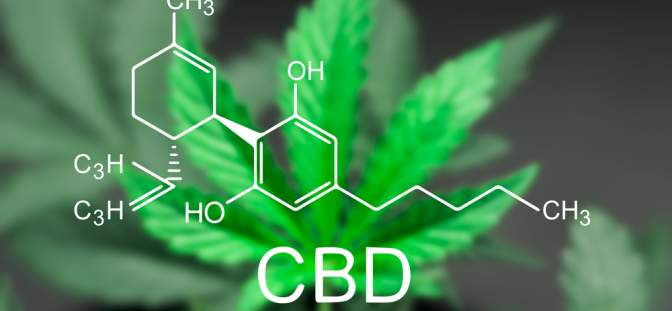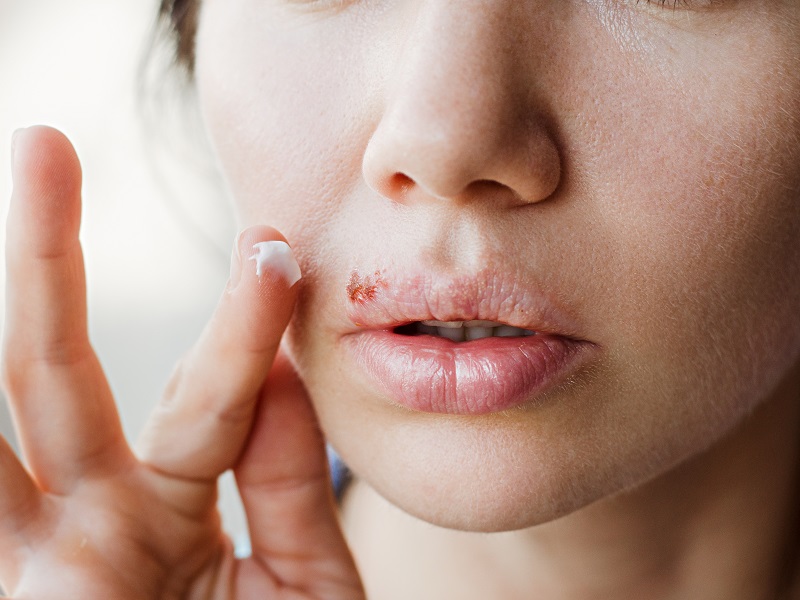How CBD Topicals Prevent Dermatological Inflammation Through Regulation of Keratinocyte Proteins?

Dermatologic inflammation or skin inflammation manifests itself in the form of rashes. These rashes can be warm to the touch, red, painful, dry or itchy. Sometimes, rashes can be raised and can cause blisters and pimples.
Skin inflammation is not bad per se. It is body’s defense mechanism to fight harmful pathogens trying to gain entry. Inflammation is also an indication that the body has started its healing process. So, skin inflammation is an essential biological process to protect the body.
Skin inflammation becomes a cause for concern when it does not resolve itself after a short period. Depending on the duration of response, inflammation can be acute or chronic.
Acute inflammation occurs as a response to triggers such as sun exposure, infections and allergens. They develop rapidly but subside, typically after a few weeks, when you treat the underlying cause if inflammation.
Chronic inflammation happens when the body’s immune system acts in a sustained manner, releasing response to triggers. It is as if your body is always on alert to fend off intruding agents. This prolonged response can result in tissue or organ damage, or cause chronic disease, over time.
As chronic inflammation occurs within the body, symptoms are not always obvious, which makes the condition serious. Some common chronic infections include eczema, psoriasis and rosacea.
CBD Topicals and Dermatologic Inflammation
The relation of CBD, a cannabinoid class compound produced by cannabis sativa plant, with dermatologic inflammation results from the fact that skin biology is regulated by body’s ECS. ECS is the body’s Endocannabinoid System, which is responsible for a variety of functions including mood regulation, sleep, reproduction, appetite and memory.
The ECS includes endocannabinoids, cannabinoid receptors and metabolic enzymes. Endocannabinoids are produced by the body and are similar to the cannabinoids of cannabis sativa. Their function is to keep the ECS working smoothly.
Cannabinoid receptors are relevant because they allow endocannabinoids to bind to them so that a specific action is taken in response to a biological input. Metabolic enzymes are compounds that produce and degrade endocannabinoids.
Endocannabinoids that are key to ECS functioning are anandamide (AEA) and 2-AG or 2-arachidonoylglyerol. Major endocannabinoid receptors include CB1 and CB2.
CB1 receptors are found in large amounts in the central nervous system, which includes the spinal cord and the brain. CB2 receptors are found in the peripheral nervous system, immune system and the digestive system.
CB1 and CB2 receptors are found in the skin too. They exist in keratinocytes (major cells of the epidermis), dermal cells, nerve fibers, hair follicles, eccrine sweat glands, and melanocytes.
Receptors mainly bind to endocannabinoids. But they can bind to TRP (Transient Receptor Potential) receptors, which are found in skin cells. TRP receptors are responsible for several skin functions including skin barrier formation and regulation, and skin cell growth. They are also responsible for skin inflammatory and immunological responses.
Key metabolic enzymes of the ECS include FAAH (fatty acid amide hydrolase) and monoacylglycerol acid lipase. FAAH is responsible for anandamide while the latter breaks down 2-AG.
CBD and the other well-known cannabinoid delta-9 tetrahydrocannabinol (THC), both interact with the body’s ECS. The interaction of THC is more like that of the body’s own endocannabinoids. THC can bind to both CB1 and CB2.
CBD interacts with the ECS in a way different from that of THC. It does not bind, but acts by preventing the degradation of endocannabinoids anandamide and 2-AG.
But a significant side-effect of THC is its psychoactive property. THC affects a user’s mental state when consumed.
CBD is not psychoactive and is well-known for its efficacy in addressing a range of difficult and complex medical conditions. Research states that CBD works for childhood epilepsy, insomnia, anxiety and chronic pain.
Pain caused due to inflammation and neuropathic conditions have proved to respond well to CBD.
More extensive studies are required though to reach concrete conclusions.
There are several pain relief CBD topicals that you could benefit from, if you are planning to use CBD. There are pain relief creams, pain relief roll-ons, and pain relief sprays to help you obtain relief.
There is also increasing evidence of CBD’s contribution to treating skin conditions. CBD topicals, in particular, are believed to be effective for pruritus, eczema, psoriasis and inflammation.
The relevance of CBD also increases given its interaction with the ECS and the function of ECS itself. An important function of the ECS is to maintain skin homeostasis. Skin homeostasis is crucial to maintain body temperature, provide protection, and maintain water balance.
Skin homeostasis also ensures hormone and vitamin production, material absorption and sensory reception. When this balance is disturbed, it leads to skin issues. For example, when body temperature goes down, sweat glands become narrow, leading to reduced sweat.
How CBD Addresses Skin Inflammation: The Mechanisms
- CBD helps skin overcome inflammation by enabling the organ to maintain good health. Skin functions as a protective shield against environmental stressors. This function can lead to production of Reactive Oxygen Species or ROS. When ROS levels become excessive, it results in oxidative stress.
Oxidative stress can lead to cell damage and cause chronic inflammation over time. Oxidative stress is also a reason for several skin conditions and aging signs on the skin.
Keratinocytes are the key class of cells in the epidermal layer of the skin. They are more vulnerable to environmental stressors. Increase in ROS and resulting oxidative stress can be damaging to keratinocytes.
Skin prevents the buildup of ROS using several defense mechanisms, which are controlled by regulator systems called NFR2 and PPAR-γ. NFR2 contains a key enzyme called hemeoxygenase1 or HMOX1. This enzyme exhibits anti-inflammatory and antioxidant properties.
In vitro studies show that CBD can exhibit the expression of HMOX1 and other genes that are regulated by NFR2.
A NHEK study reported that CBD exhibited the capability to induce the expression of several NFR2 genes. The study also reported that CBD upregulated the expression of HMOX1 in particular.
The same study also reported that topical CBD application elevated HMOX1 levels and expression of keratins 16 and 17, which are responsible for wound repair and proliferation. This observation was made using animal (mice) subjects.
Another study was conducted in vitro and used human keratinocytes. It was found that CBD could penetrate the human keratinocytes and regulate oxidative stress resulting from exposure to hydrogen peroxide and UVB irradiation.
The above study revealed that CBD also contributed to membrane integrity. CBD did so by protecting the membrane from polyunsaturated fatty acid reduction caused by peroxide.
Another significant finding of the study was that CBD could activate the regulator PPAR-γ. Researchers treated 2D and 3D cells of fibroblast types with CBD. This treatment resulted in the activation of PPAR-γ.
A simultaneous decrease in NF-kB (NF-kappa B) was also found. This finding is highly significant because NF-kB is a protein group that regulates cytokine production and DNA transcription. Another major function of NF-kB is to control cell functions.
NF-kB protein group also modulates inflammatory and immune responses of the body. High levels of NF-kappa B can lead to inflammatory disorders. With research showing that CBD can reduce NF-kB levels, new avenues of studies to examine the treatment potential of CBD open up.
Both PPAR-γ and HMOX1 are strong cell protective systems. They are also antioxidant, anti-inflammatory and anti-apoptotic (protection against apoptosis, a cell destruction process).
Experts state that treatments that involve regulation of their expression (such as the effect obtained by using CBD) may be effective for skin conditions with an inflammatory component. Such treatments could also be effective for skin conditions arising out of keratin disorders.
Skin conditions such as eczema and atopic dermatitis, which have an inflammatory component, may benefit from CBD-induced treatments, the authors concluded.
- CBD showed anti-inflammatory properties in an experimental model. The study used CBD for allergic contact dermatitis. Atopic Dermatitis or AD is a skin disorder characterized by chronic inflammation.
Phytocannabinoids (cannabinoids such as CBD that are produced by cannabis sativa plant) have the capability to regulate inflammatory responses. They do so by modulating one or more underlying body mechanisms.
- A study was performed to assess the effect of CBD on mechanisms that were responsible for balancing redox processes and keratinocyte inflammation. The keratinocytes under study were irradiated with UVB and UVA.
The study showed that CBD elevated the performance of antioxidant enzymes significantly in keratinocytes that were irradiated. Antioxidant enzyme activity is significant because it protects the skin against cell damage induced by oxidative stress.
The role of keratinocytes becomes significant in this context. Keratinocytes are the major group of cells in the epidermis, skin’s outermost layer. Keratinocytes constitute nearly 90% of cells in this layer. As the cells in the outermost skin layer, keratinocytes present the first line of defense for the body against pathogen invasion.
During skin inflammation, keratinocytes take on the role of immuno-modulators. They control inflammation in this role. By contributing to increased levels of antioxidant enzymes, CBD indirectly contributes to keratinocyte protection.
The above study also found that CBD was able to prevent lipid peroxidation, which can otherwise lead to cell damage. CBD was able to achieve the prevention even when the activity of antioxidant enzymes such as reductase and glutathione peroxidase was low.
- The same study also revealed another mechanism through which CBD addressed skin inflammation.
The study found that CBD behaved in a certain way during stress conditions. Cannabidiol modified the interactions of Nrf2 and NFkB, 2 key cell regulators. CBD inhibited the NF-kB pathway, which resulted in Nrf2 activators expressing more. CBD-induced inhibition also stimulated Nrf2 transcription activity.
These developments increase the antioxidant activity of CBD, which is essential to prevent cell damage.
The study authors concluded that CBD’s antioxidant activity induced through Nrf2 activation is significant. Also significant is CBD’s anti-inflammatory properties and its role as a NFkB inhibitor. These finding are relevant and must be considered when researching for new skin treatments, concluded the authors.
- Itch or Pruritus, another manifestation of inflammation, could also be addressed by CBD. Research shows that cannabinoid receptors TRPA1, TRPV1-4 and TRPM8, impact complex skin signaling between keratinocytes, sensory nerves and immune cells. This signaling leads to the itching seen in pruritus patients.
CBD, in its role as an FAAH inhibitor, could indirectly modulate the receptors and thus the communications between the components causing the itch. As an FAAH inhibitor, CBD leads to an increase in endocannabinoids. This increase leads to modulation of receptor responses.
CBD acts as a TRPV1 agonist, and a CB2 inverse agonist (inducing an effect that is opposite to that of the agonist). These functions may also help CBD modulate receptor responses to itch.
Extensive studies are required to reach conclusive results in this regard though.
Planning to Buy CBD Topicals? Here’s What you Should Know
CBD topicals can help people with skin conditions such as eczema and psoriasis. CBD’s anti-inflammatory properties can help reduce redness, pain, irritation and dryness associated with these conditions. CBD topicals can also help keep the skin moist and healthy.
- The first step to safe use of CBD topicals is to apprise your doctor/ dermatologist of your decision. Let your doctor guide you toward safe use of CBD.
There are a range of CBD skin products available in the market. Facial serums, eye serums, lotions, facial creams and body oils, are available for maintaining your skin health.
Antioxidant properties of CBD can prevent skin damage due to free radicals. This CBD behavior can help reduce blemishes and wrinkles on the skin.
- Check product ingredients. If the label reads CBD Isolate, then the topical contains only CBD. If it says Broad-Spectrum CBD, then it contains other compounds from cannabis sativa plant in addition to CBD. These include terpenes and cannabinoids other than CBD. Broad-Spectrum topicals usually exclude THC.
If the product is Full-Spectrum CBD, then it contains all components of cannabis sativa, including THC.
- Check if the CBD topical has been tested for contaminants. A Certificate of Analysis (COA) accompanies all quality CBD products. The COA is an assurance of quality for users.
The COA also specifies the quality tests that the product has undergone. Topicals from responsible manufacturers are free of harmful contaminants, including pesticides, heavy metals, solvents and molds.
In Conclusion
CBD has introduced researchers to new possibilities in the treatment of skin conditions. It has shown the way forward for future research. Many CBD topicals are already being used and well-tolerated by patients. More extensive studies are underway to ensure complete efficacy of CBD topicals for skin inflammation.
References:
https://fldscc.com/2019/12/19/what-causes-skin-inflammation/
https://www.hopkinsmedicine.org/health/wellness-and-prevention/rashes-and-skin-inflammation
https://www.healthline.com/health/endocannabinoid-system#functions
https://www.healthline.com/health/endocannabinoid-system#cbd
http://www2.estrellamountain.edu/faculty/farabee/biobk/biobookintegusys.html
https://www.dermatologytimes.com/view/hemp-skin-health
https://www.sciencedirect.com/topics/neuroscience/lipid-peroxidation
https://www.healthline.com/health/top-10-cbd-lotions-creams-and-topicals#how-we-chose
More articles:




